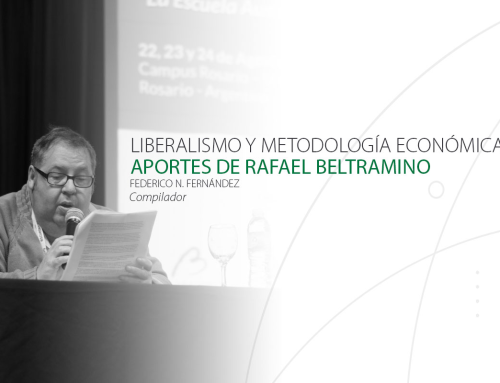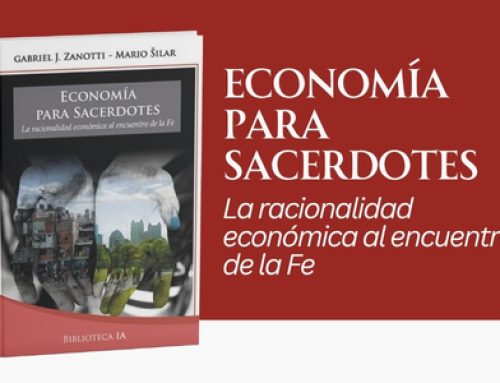2 de junio de 2015
Osvaldo H. Schenone
Academia Nacional de Ciencias Económicas (Argentina)
W. Bradford Littlejohn praises Piketty´s book[1] in unambiguous terms stating that, in fact, perhaps more than anything else, Capital is a clarion call for economists to humble themselves and take their place among the social sciences, to abandon their childish passion for mathematics in addition to their contempt for other disciplines and their absurd claim to greater scientific legitimacy.
Littlejohn considers Piketty´s book a demonstration of just what can be achieved by such a methodological shift and, after declaring that the book is a compelling argument that the discipline cannot afford to ignore, nicely summarizes for the reader the gist of Piketty’s main contention as follows:
Why was it that for so many centuries the wealthy tended to be those who were born wealthy, not those who worked for it?
According to Piketty, the root of the problem is that the rate of return on capital (r, for brevity) exceeded the rate of growth of national income (g, for brevity). To put it in a nutshell, the root of the problem is r>g. Capital (generally in the form of land or bonds) yielded a fairly steady real return of 4-5 percent, while economic growth languished at near zero before 1700 and at 1-2 percent from 1700 onwards, thus perpetuating permanent, unfair and extreme inequalities.
Conventional economic wisdom has long held, complains W. Bradford Littlejohn, that this state of affairs was steadily eroded by the rise of industrial capitalism in the second half of the eighteen century: By unleashing a powerful engine of economic growth and encouraging as never before the rise of skilled labor, capital was gradually deprived of its advantage and, accordingly, the playing field become more even as wealth flowed meritocratically toward the most talented and hardest working individuals.
Littlejohn goes on to tell readers that Piketty demolishes the rosy picture designed by conventional economic wisdom by arguing (without actually proving, it would be fair to add), that inequality can only grow unabated under the rules of capitalism in the foreseeable future.
Piketty claims that wealth inequalities continued to increase right up to the eve of World War I at which point the two World Wars and the Great Depression decimated the intergenerational wealth of Europe and to a lesser extent the US. In the accelerated growth period of postwar rebuilding g was greater than or equal to r and wages rose rapidly, but already with these large but temporary aberrations behind us, r is again outpacing g, inequality is growing, and the importance of inherited wealth is once again asserting itself. In the future, as economic growth slows, r may again exceed g by a wide margin, leading to spiraling inequality.
- Bradford Littlejohn is right to say that this is essentially Piketty’s main contention, but he does not bring into question whether Piketty has proven his claims. Instead he takes for granted that Piketty’s main contention nicely follows from his data.
This is not the case: Piketty’s Figures 6.1 and 6.2 (pages 200 and 201), clearly show that the share of capital in national income in Britain fell from almost 40 percent in 1770 to less than 30 percent in 2010, and from more than 40 percent in France in 1850-60 to less than 30 percent in 2010. In the last two and a half centuries the share of capital did not rise, but actually fell, in France and Britain, according to Piketty’s data.
Piketty’s Figure 10.9 (page 354) shows that at the world level (not just France and Britain) g systematically approached r from below during the last three centuries, and Figures 10.10 and 10.11 (pages 356 and 357) show that g finally caught up, exceeded and remained above r at the world level during the last century (1913 to 2012). Instead of r>g, we have had g>r during the last century, according to Piketty’s data.
Although these observations come directly from Piketty´s data, they hardly justify Piketty’s contention about the acceleration of the concentration of income in the hands of capitalists, away from the workers.
Of course, they also hardly justify Littlejohn enthusiasm about having, at last, found a book that mends (totally or partially) so many things that he finds wrong with conventional economic wisdom.
What could put Piketty’s derailed contention back in track? The answer is a simple reversal of the trend observed during the last century, by placing r increasingly above g after 2012. This is exactly what Piketty does, as shown in the far right side of Figures 10.9, 10.10 and 10.11 (pages 354, 356 and 357); that is, a widening gap between r and g after 2012. But how do we know that this will actually be the case, given that events after 2012 have not yet been observed?
The essence of Piketty’s book is not what he shows or can reasonably prove but what he predicts: “in all likelihood, the gap will widen again in the twenty-first century as growth (especially demographic growth) slows. According to the central scenario discussed in Part One, global growth is likely to be around 1.5 percent a year between 2050 and 2100, roughly the same rate as in the nineteenth century. The gap between r and g would then return to a level comparable to that which existed during the Industrial Revolution.” (page 355).
Thus, Piketty’s main contention does not follow from his data, but from his predictions about r and g between 2050 and 2100. Such predictions do not necessarily follow from his data.
Of course, by their own nature, all predictions remain to be proven true or false by future events. It is too early (perhaps half a century early) to accept without further discussion that Piketty’s book nearly proves what Littlejohn takes for granted: That the world is heading toward spiraling inequality.
[1] Thomas Piketty, Capital in the Twenty-First Century Trans. Arthur Goldhammer (Cambridge: Belknap Press of Harvard University Press, 2014).





Deja tu comentario